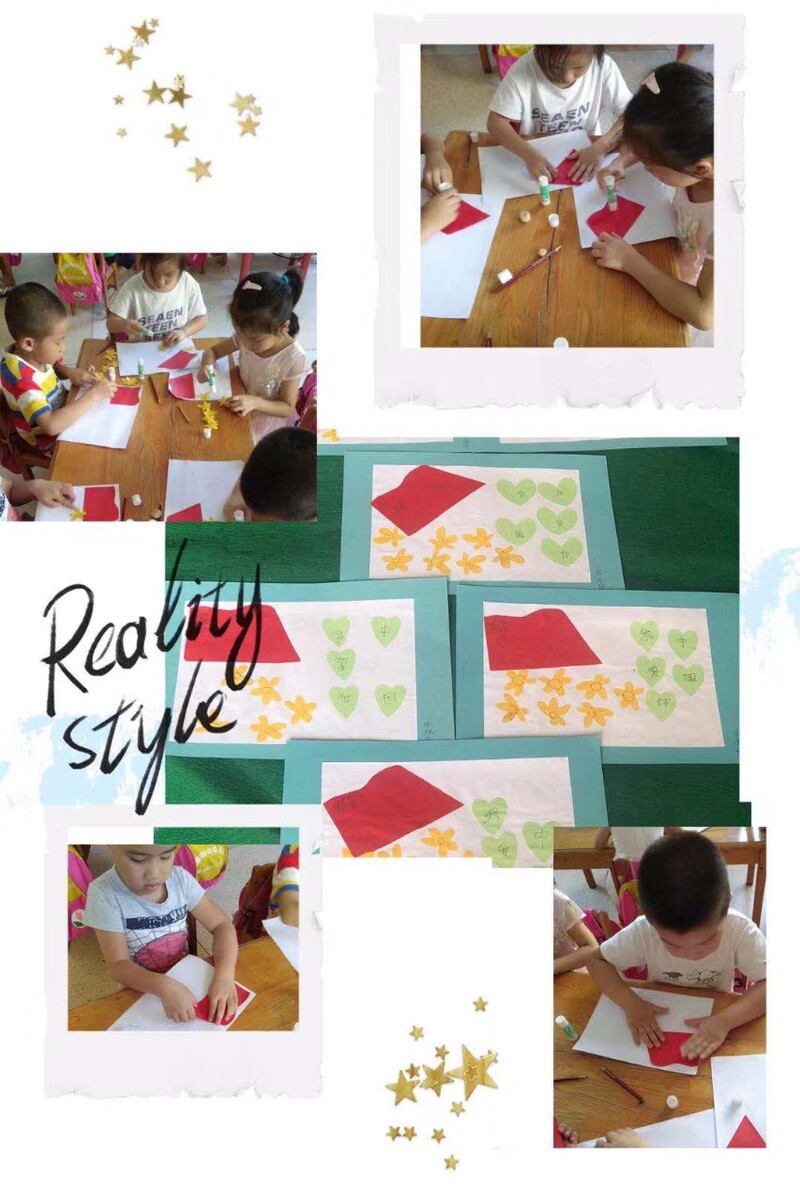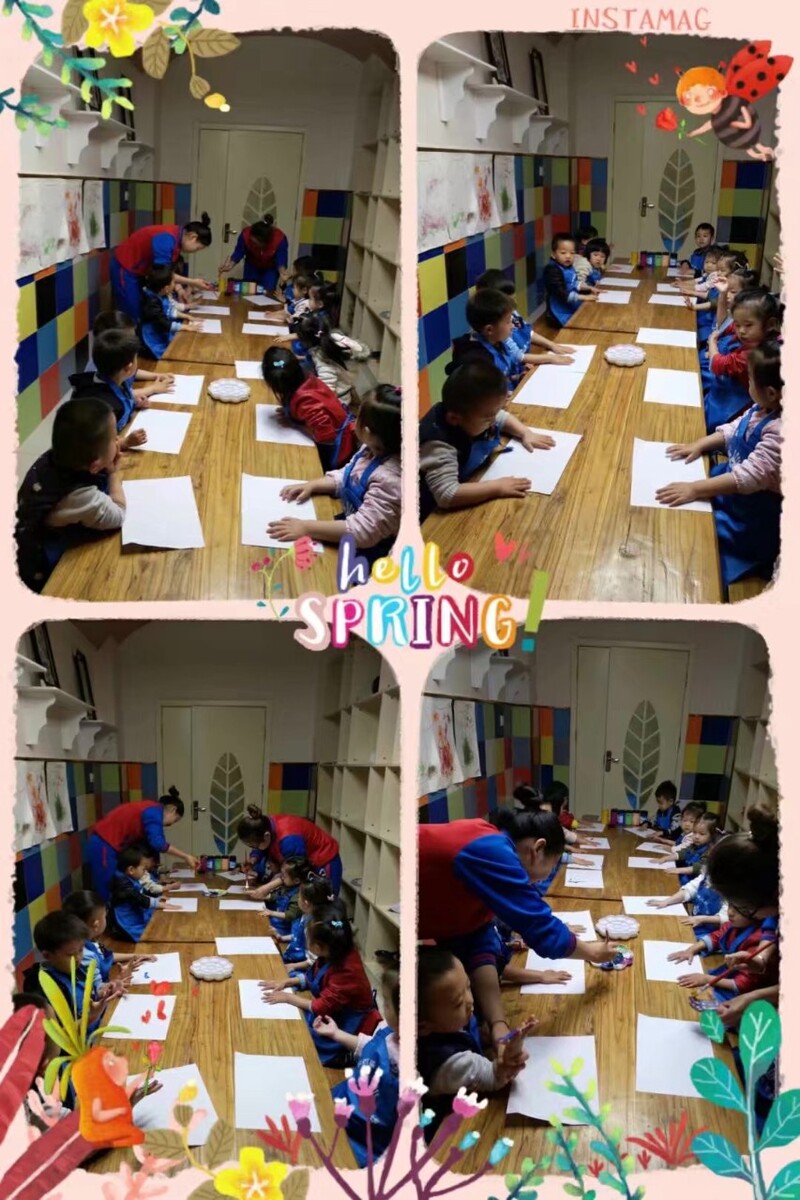四年级英语上册重点笔记归纳,小学英语四年级英语语法知道总结
来源:整理 编辑:挖葱教案 2023-03-18 19:59:08
本文目录一览
1,小学英语四年级英语语法知道总结
名词变复数 比较级形容词和副词一般现在时 过去时现在进行时 物主代词和人称代词将来时 THERE BE 句型一般疑问句特殊疑问词四年级英语主要语法有:一般现在时,现在进行时。现在进行时句子结构:主语+是动词+现在分词(ing)例如:she is singing.一般现在时句子结构:主语+动词原形 (主语为第三人称单数时,动词加s)例如:i sing very well.he sings very well.英语早学早轻松,四年级重点语法有过去式、正在进行时、三人称单数一般现在时。
2,英语四年级上册知识点总结
知识在人群的分布与构成,决定了这人群的进化级别与方向,人的生命只是人类知识构成,知识的质量,决定了生命的质量,一个社会所拥有知知质量决定了社会运作的质量。下面我给大家分享一些英语四年级上册知识点,希望能够帮助大家,欢迎阅读! 英语四年级上册知识点1 Unit1 My classroom 一、a字母发音(熟背): a_e [ei] cake 蛋糕 face脸 make制作 date日期 hate讨厌 name名字 a [?] cat猫 hat帽子 map地图 dad爸爸 man 男人and和 hand手 ant蚂蚁 can可以 maths book数学书 blackboard黑板 apple苹果 fat胖的 have有 panda熊猫 candy糖果 小窍门:以e结尾的发音是大部分是相同的一组哦 二、单词(熟记): classroom教室 window窗户 blackboard黑板 ligh t 灯 pictur图画e door门teachers desk讲台 computer计算机 fan电风扇 wall墙 floor地板 really真的 clean打扫 help帮助near旁边 on上面 under下面 in里面 三、重点词组(熟背) Open the door打开门 Turn on the light 打开灯 Close the window 关窗户 Put up the picture挂图画 Clean the blackboard 擦黑板 Clean the window 擦窗子 四、句型(熟记): 1. Wheres my school bag? Its near the computer我的书包在哪儿?在电脑旁边。 2. Lets clean the classroom. 我们打扫教室吧。① OK. 好的。 3. Let me clean the windows. 我来擦窗户。 4. We have a new classroom. 我们有一个新教室。 5. Whats in the classroom? 教室里有什么? One blackboard, one TV, many desks and chairs. 一个黑板,一台电视,很多桌椅。 6. Let me help you. 我来帮你。Thank you. 谢谢你。 7. Wheres the green book? Its under the teachers desk. 绿色的书在哪儿? 在讲桌下面。 8. Where is the kite? Its near the window. 风筝在哪里? 在窗户旁边。 五、重难点 lets==let us 让我们 let me让我 Whats in the classroom? A blackboard. a TV, many desks and chairs. Many表示许多,后面应该用可数名词复数形式。 in/on/under/near的用法及翻译 对话: We have a new classroom? Really? Where is my schoolbag? Its near the computer. Excuse me. Oh, sorry. 六、 作文 (背熟) My classroom This is my classroom. The door is yellow. The desks are green. The computer is black. I like my classroom. And you?/How about you? 英语四年级上册知识点2 Unit 2 My schoolbag 一、i字母发音(熟背): i_e [a?] like喜欢 kite风筝 five五 nine九 bike自行车 Mike麦克 ice冰 nice漂亮 white白色 fine好 rice米饭 knife 刀 i [i] it它 is是 his他的 big大的 pig猪 six六 fish鱼 English 英语 milk牛奶 in里面 little小的 living客厅 kitchen厨房 window窗户 chicken鸡肉 chopsticks筷子 dinner 晚饭 fridge冰箱 this这个 二、单词(熟记): schoolbag书包 maths book数学书 English book英语书 Chinese book语文书 storybook 故事 书candy糖果 notebook 笔记本 toy玩具 key钥匙pen钢笔 pencil铅笔 book书本 ruler尺子 pencil-box铅笔盒 wow哇 lost丢失 so much非常地 cute可爱的 三、重点词组(熟背) Put your Chinese book in your desk把你的语文书放进桌子 Put your pencil box on your English book把你的铅笔放在英语书上 Put your maths book under your schoolbag把你的数学书放在书包下 Put your eraser near your pencil box把你的橡皮放在铅笔盒旁边 四、句型(熟记): I have a new schoolbag. Really? May I see it? 我有一个新书包。 真的吗? 我能看看吗? 2. What colour is it? Its green. I like it very much. 它是什么颜色的? 绿色的。 我很喜欢它。 3. Whats in your schoolbag? 你的书包里有什么? An English book. A maths book, three storybooks and …. 一本英语书, 一本数学书, 三本故事书 和…. 4. I lost my schoolbag. 我的书包丢了。 5. Good night, mum. Good night. 晚安, 妈妈。 晚安。 6. Put away your books. OK. 把你的书放起来。 好的。 7.Some more? No, thanks./ Yes, please. 再吃点吗? 不,谢谢。 好的。 8. May I see it? Sure. Here you are. 我能看看吗? 当然。 给你。 五、重难点 Whats in your schoolbag? An English book, a Chinese book and a notebook. What colour is it? Its black and white. an English book an egg an orange an apple an ant 元音字母开头的单词,前面应该用an 名词复数形式 candy---candies 六、作文(背熟) My schoolbag This is my school bag. Its blue. Its a dog. Whats in it? An English book. A maths book and a Chinese book. I like my schoolbag very much. 英语四年级上册知识点3 Unit 3 My friends 一、o字母发音(熟背): o_e [??] nose鼻子 note便条 Coke可乐 Mr Jones琼斯先生 hope希望 home家 rose玫瑰 close关 O [?] not不 hot热 dog狗 mom妈妈 lost丢失 box箱子 orange橙色 doctor医生 chopsticks筷子 job 工作 二、单词(熟记): tall高的strong 强壮的 friendly友好的 quiet安静的 hair头发 shoe鞋 glasses眼镜 his他的 her 她的or或者 right对的 hat帽子 三、句型(熟记): I have a good friend. 我有一个好朋友。 Shes short and thin. 她又矮又瘦。 She has two big eyes. 她的眼睛很大。 She has long hair. 她的头发很长。 She has an orange schoolbag. 她有一个橙色的书包。 Whats her name? 她的名字叫什么? Her name is Sarah. 她的名字叫萨拉。 Hes tall and strong. 她又高又壮。 He has glasses and his shoes are blue. 他戴眼镜,他的鞋子是蓝色的。 Whats his name? 他的名字叫什么? His name is Zhang Peng. 他的名字叫张鹏。 四、重难点: He has short hair.他的头发很短。 He has small eyes. 他的眼睛很小。 He has glasses. 他戴眼镜。 He has a blue schoolbag. 他有一个蓝色的书包。 She has long hair. 她的头发很长 She has big eyes. 她的眼睛很大。 She has red shoes, 她的鞋子是红色的。 She has a pink schoolbag. 她有一个粉色的书包。 has是have的第三人称单数形式,当前面的主语是he /she/ it以及能用 he/ she/ it来代替的词是,后面要用has. 如:my father 可以用he来代替, My father _______ glasses. 只能用has, 不能用have. 当主语是 I/ we /you/ they时,应该用动词原形have。 如: I have a good friend. We have a new classroom, You have a nice book. They have a happy family. Whats his name? His name is Zhang Peng. his≠hes his他的 hes= he is 他是 his pen 他的钢笔 hes pen他是钢笔 (这是做题非常容易出错混淆的地方) Whats her name? Her name is Chen Jie. her ≠shes 原因同上 He has short hair. He has big eyes. hair 是不可数名词,eyes是复数形式,前面不能加a 或者an He has a blue schoolbag. Schoolbag是可数名词,表达的是单数形式,前面应该加a 五、作文(背熟) My friend I have a good friend. She is tall and thin. She has long hair. She has big eyes. She has a pink bag. Whats her name? Her name is … 英语四年级上册知识点4 Unit 4 My home 一、u_字母发音(熟背): u_e [ju:] use使用 cute可爱的 excuse原谅 tube管道mule骡子 u [?] duck鸭 cut切 mum妈妈 bus巴士 jump跳 puppy小狗 but 但是 uncle叔叔 fun 开心 under下面 study书房 us我们 二、单词(熟记): bedroom卧室 living room客厅 study书房 kitchen厨房 bathroom卫生间 bed床 phone电话 table桌子 sofa长沙发 fridge冰箱 find找到 them他们 三、重点词组(熟背) Go to the living room. Watch TV去客厅,看电视 Go to the study. Read a book去书房,读书 Go to the kitchen. Have a snack去厨房,吃零食 Go to the bedroom. Have a nap去卧室,睡觉 Go to the bathroom. Take a shower. 去浴室,洗澡 四、句型(熟记): Where is she?她在哪里?She is in thekitchen. Where are theye?她在哪里?They are in thekitchen. Is she in the study? No, she isnt. 她在书房里吗?不, 她不在。 Is she in the living room? No, she isnt. 她在客厅里吗?不, 她不在。 Is she in the kitchen? Yes, she is. 她在厨房里吗?是,她在。 Is it in your desk? Yes, it is. 它在你的课桌里吗? 是,它在。 Is he in the classroom? No, he isnt. 她在教室里吗?不, 她不在。 Are they on the table? No, they arent. 它们在桌子上吗?不,它们不在。 Are the near the phone? No, they arent. 它们在电话旁吗? 不,它们不在。 10.Are they in the door? Yes, they are. 它们在门里吗?是,它们在。 五、重难点 一般疑问句的提问与回答:我们接触的一般疑问句是以be动词is/are引导的问句,用yes或者no作为回答。问句是单数,答句也要用单数,问句是复数,答句也要用复数。问句用哪个be动词,答句也要用哪个be动词。 如:Is she in the kitchen? Yes, she is./ No, she isnt. Are they under the desk? Yes, they are./ No, they arent. 问句中出现的名词,答句再出现的时候,可以用 he she it they来代替: Is Amy in the classroom? Yes, she is./ No, she isnt. Is John at home? Yes, he is./ No, he isnt. Is the elephant in the zoo? Yes, it is./ No, it isnt. Are the glasses on the bed? Yes, they are./ No, they arent. 六、作文(背熟) My bedroom, Look at this room. Its my bedroom. There is a blue bed. There is a desk. My book is on the desk. My bag is under the chair. I like my bedroom. 课本P43, My living room,也是一篇作文,二选一,背熟。 英语四年级上册知识点5 Unit5 Dinners ready 一、e_字母发音(熟背): e [i:] me 我 he 他 she 她 we我们 be be动词 e [e] bed床 red红色 pencil铅笔 get得到 let让 二、单词(熟记): beef牛肉 chicken鸡肉 noodles面条(复数) soup汤 vegetables蔬菜(复数) chopsticks bowl碗 fork叉子 knife刀 spoon勺子 dinner正餐 ready 准备好 help yourself请自便, 随便吃 pass给,递 try尝试 三、句型(熟记): Whats for dinner? 晚餐吃什么? What would you like? 你想吃什么? Id like some soup and bread, please. 我想喝汤,吃面包。 Would you like a knife and fork? 你想要刀叉吗?No, thanks. 不用,谢谢 Would you like some soup? 你想要一些汤吗? Yes, please. 是的,请(给我一些)。 四、重难点: What would you like? Id like some soup and bread, please. Soup和bread都是不可数名词, 所以,虽然前面有表示一些的单词some,后面不需要加s。 但是如果是可数名词,就需要用复数形式: Id like some eggs/tomatoes/vegetables. 做题的时候需要细心对待。 Unit6 Meet my family 一、单词(熟记): family 家庭 parents cousin,堂兄弟姐妹 uncle aunt baby brother doctor cook driver farmer nurse people but little puppy football player job basketball parents父母 cousin表兄弟姐妹 uncle叔伯舅姑姨父 aunt姑姑;婶;姨 baby brother婴儿小弟弟 doctor医生 cook厨师 driver司机 farmer农民 nurse 护士 people人们 but但是 little小的 puppy小狗 football player 足球 运动员 job工作 basketball 篮球 二、句型(熟记): How many people are there in your family? 你家有几口人? Three. 三个 My family has six people. 我家有六口人 How many apples are there on the tree? 树上有多少苹果? Is this your uncle? Yes, it is. 这是你叔叔吗?是的,他是 Is this your aunt? No, it isnt. 这是你阿姨吗?不,她不是 Whats your aunts job? Shes a nurse. 你婶婶做什么工作的?她是一位护士。 Whats your fathers job? Hes a cook. 你爸爸是做什么的?他是一名医生 Whats his job? Hes a policeman. 他的工作是什么?他是位警察。 Whats her job? Shes a nurse. 他的工作是什么?他是位警察。 三、重难点: How many后面要用可数名词复数形式,people是集合名词,本身表达的就是复数,所以不需要加s,但是其余单词要用复数形式: How many books are there? Two. How many pencils are there in your pencil box? Five. 答句Two./ Five.是作为单独的 句子 出现的, 所以第一个字母要大写,后面要加标点符号。 Is this your uncle? Yes, it is. 答句之所以用it,是因为在语境中, 指的是照片或者图画。如果问句: Is he your uncle? 则回答Yes, he is. 注意:无论问句是this, 还是that, 答句都应该用it代替,而不是 Is this your uncle? Yes, this is. 提问职业:Whats your mothers job? Shes a nurse. 还可以用 Whats her job? Shes a nurse. 在人名或者称呼后面加s,表示…的,叫做名次所有格。 my fathers job我爸爸的,Zhang Pengs pencil张鹏的铅笔 Chen Jies family陈杰的家庭 my father是男的,所以,my fathers job可以用his job 代替。 同理,my aunts job也可以用 her job代替。 英语四年级上册知识点 总结 相关 文章 : ★ 最新小学四年级英语上册知识点 ★ 小学四年级英语知识点总结 ★ 最新小学四年级上册英语知识点 ★ 期末四年级英语知识点总结 ★ 四年级英语语法知识点汇总 ★ 四年级英语上册第一单元知识点复习 ★ 四年级上册英语各单元知识点整理 ★ 小学四年级上册英语知识点归纳 ★ 小学英语四年级上册期末知识点总结 ★ 最新小学四年级上册英语重点知识

3,四年级英语主要学些什么知识点
上学期重点学习数词、情态动词的用法和时间的表达法,另外还会涉及几个常见介词,重点是学会将这些知识点在实际交流中灵活运用。下学期,一般现在时和现在进行时需要重点掌握,配合“问年龄”、“喜欢”、“想要”等主题的表达方法,学会在不同话题、情景中的运用表达。学习模块 内容安排 不定代词 不定代词与形容词的关系 常考易混不定代词词组的辨析 数词 基数词与序数词的转变 数词+hundred与hundreds of 数的运算 介词 方位介词的图示解析 常考介词的辨析 形容词副词 形容词与副词的转变(-ly/-y) -ing/-ed形容词、频率副词的辨析 一般将来时 一般将来时的定义及结构 一般将来时的时间状语 一般过去时 过去式的规则变化及不规则变化 一般过去时的定义及结构 一般过去时的时间状语 陈述句 陈述句谓语的单复数 陈述句肯定否定形式的转变

4,2015小学人教版新起点英语四年级上册单元知识点
名词的数指名词的单数和复数形式。可数名词表示―一个‖时用单数,―两个以上‖时用复数;不可数名词表示量时,通常用―数词+单位+of+物质名词‖的形式,如 a piece of bread (一片面包), 变为复数时,只须将单位名词变为复数, 如:two pieces of bread(两片面包)。1. 一般情况下在词尾加 s. 词尾读音 shop --- shops (商店) 在清辅音后读 [ s ] bag --- bags (书包) 在浊辅音后读 [ z ] window --- windows (窗户) 在元音后读 [ z ] 2. 以 s, x, sh, ch 结尾的单词在词尾加es。class --- classes (班级) 词尾读音[ iz ] box --- boxes (盒子) match --- matches (比赛) brush --- brushes (刷子)3. 以―辅音字母 +y‖ 结尾的词, 变y为 i 加es. 故事) 词尾读音[ iz ] 4. 以―元音字母 +y‖ 结尾的词,在词尾直接加 s key --- keys 词尾读音[ z ] monkey --- monkeys5.以 ―o‖ 结尾的名词, 复数一般在词尾加―s‖, 但个别加 ―es‖ 西红柿) 词尾读音[ z ] 土豆) zoo --- zoos (动物园) photo --- photos (照片)*(以 ―o‖结尾,复数加 ―es‖)口诀:黑人(Negro)英雄(hero),左手拿着西红柿(tomato),右手拿着破土豆(potato), 头顶一个大芒果(mango)。6. 以 f或 fe 结尾的词,多数变f或 fe 为 ves.1/36页树叶) 词尾读音[ vz ] knife --- knives ( 小刀)*(以f或fe结尾的单词,需把f或fe 变ves的单词)口诀:妻子(wife)持刀(knife)去宰狼(wolf),小偷(thief)吓得发了慌,躲在架下(shelf)保己命,半(half)片树叶(leaf)遮目光。*(以f或fe结尾的单词,直接加 ―s所有版本人教版人教新课标人教新起点上海牛津版新标准英语(一年级起)新标准英语(三年级起)冀教版(多媒体交互)辽教版快乐英语(三年级起)新版湘少版北师大版(多媒体交互)冀教起始版人教新课标pep(单词mp3)人教新课标pep(课文以上版本本人均有全套的课程
5,四年级上英语整册重点
重点就是关于比较级和最高级。大多数形容词有三种形式,原级,比较级和最高级, 以表示形容词说明的性质在程度上的不同。 形容词的原级: 形容词的原级形式就是词典中出现的形容词的原形。 例如: poor tall great glad bad 形容词的比较级和最高级: 形容词的比较级和最高级形式是在形容词的原级形式的基础上变化的。分为规则变化和不规则变化。 规则变化如下: 1) 单音节形容词的比较级和最高级形式是在词尾加 -er 和 -est 构成。 great (原级) (比较级) (最高级) 2) 以 -e 结尾的单音节形容词的比较级和最高级是在词尾加 -r 和 -st 构成。 wide (原级) (比较级) (最高级) 3)少数以-y, -er, -ow, -ble结尾的双音节形容词的比较级和最高级是在词尾加 -er 和 -est 构成。 clever(原级) (比较级) (最高级) 4) 以 -y 结尾,但 -y 前是辅音字母的形容词的比较级和最高级是把 -y 去掉,加上 -ier 和-est 构成. happy (原形) (比较级) (最高级) 5) 以一个辅音字母结尾其前面的元音字母发短元音的形容词的比较级和最高级是双写该辅音字母然后再加 -er和-est。 big (原级) (比较级) (最高级) 6) 双音节和多音节形容词的比较级和最高级需用more 和 most 加在形容词前面来构成。 beautiful (原级)? (比较级) (比较级) difficult (原级) (最高级) (最高级) 常用的不规则变化的形容词的比较级和最高级: 原级------比较级------最高级 good------better------best many------more------most much------more------most bad------worse------worst far------farther, further------farthest, furthest 形容词前如加 less 和 least 则表示"较不"和"最不 形容词比较级的用法: 形容词的比较级用于两个人或事物的比较,其结构形式如下: 主语+谓语(系动词)+ 形容词比较级+than+ 对比成分。 也就是, 含有形容词比较级的主句+than+从句。注意从句常常省去意义上和主句相同的部分, 而只剩下对比的成分。 形容词最高级的用法: 形容词最高级用于两个以上的人和物进行比较, 其结构形式为: 主语+谓语(系动词)+the+形容词最高级+名词+表示范围的短语或从句以上是我搜来的笔记,望采纳。
文章TAG:
四年级英语上册重点笔记归纳四年 四年级 年级
大家都在看
-

小班分类的相关教案,按颜色分类小班math教案精选
2022-12-31
-

整合教案车轮的秘密,幼儿园小班教案一览表
2023-01-21
-

隆中队教案,复习参考资料(一)
2023-02-04
-

衣架的使用教案,空气干燥器衣架知多少?问与答(19)
2023-02-17
-

小班水果区域活动教案,我的最爱水果
2023-02-27
-

我用镜子做游戏幼儿教案,小学语文活动照片
2022-12-19
-

人主要食物的营养成分教案,维生素是人体必需的第七种营养元素
2022-12-31
-

幼儿园中班体游小蜘蛛请客教案,小蜘蛛织网教案怎么写?
2023-01-20
-

小班付又反思的教案,幼儿园小班安全公开课教案《安全全滑梯》
2023-01-23
-

绘本别再请来请去教案,一文读懂!这些幼儿园绘本教案
2023-01-23
-

教案画一棵树的教案,如何写幼儿园美术教案?
2023-01-25
-

人教版五年级数学小数乘整数教案,小数乘法整数有何不同?
2023-02-10
-

音乐教案 贝多芬与歌德,歌德不愿意走但乐队鼓励他继续走下去
2023-02-18
-

生活当中的色彩搭配教案,坚毅向前预算案
2022-12-17
-

小学武术踢球教案设计,体育健身操、跑步、游泳、乒乓球
2022-12-18




















